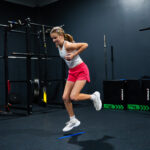Youth Athlete Training Tips Every Parent Should Know
Youth athlete training is a journey that involves more than just the athlete. Parents play a major role in ensuring their child trains smart, stays motivated, and avoids burnout.
Whether your child is just starting or already competing, these training tips will help guide their development.
Support Starts at Home
Parental support in youth athlete training begins with encouragement and communication. Listen to your child’s goals and help them stay excited about sports.
Show interest in their progress. Attend games, ask about training sessions, and provide healthy meals. These small actions make a big impact on motivation and performance.
Most importantly, never pressure your child. Let them enjoy the process at their own pace.
Choose the Right Program
Not all training programs are equal. The best programs focus on safe, age-appropriate development.
Look for a training environment that:
-
Emphasizes fundamentals over competition
-
Prioritizes movement quality
-
Offers a mix of strength, speed, and agility work
-
Includes qualified coaches who work with youth
A great example is Next Level Athletics, where youth athletes develop in a positive, professional setting.
Focus on the Fundamentals
Youth athlete training should begin with the basics. Before kids can excel at sports, they need to master fundamental movements.
Focus on exercises like:
-
Squats for lower body strength
-
Push-ups for upper body control
-
Planks for core stability
-
Jumping drills for power and coordination
Mastering these helps athletes reduce injury risk and perform at a higher level. It also sets them up for more advanced training later.
Avoid Early Specialization
Many parents believe their child must specialize in one sport early to succeed. However, research shows this can lead to burnout and overuse injuries.
Instead, encourage multi-sport participation until at least age 13–15. This builds a broader athletic base and keeps training fresh and fun.
According to Healthline, variety improves overall fitness and reduces the risk of injury.
Monitor Recovery and Sleep
Recovery is just as important as training. Young bodies need time to grow, adapt, and repair.
Encourage:
-
8–10 hours of sleep per night
-
Rest days each week
-
Proper hydration and nutrition
-
Stretching and foam rolling
Signs of overtraining include fatigue, mood swings, and poor performance. If these appear, consider scaling back.
Recovery fuels long-term success and keeps training sustainable.
Teach Mental Toughness and Positivity
Youth athlete training isn’t only physical—it’s mental too. Help your child build mental resilience by:
-
Focusing on effort, not just outcomes
-
Teaching them to bounce back from mistakes
-
Praising hard work and consistency
-
Keeping a positive attitude during setbacks
Confidence and mental strength can make the difference in competitive situations. Let them know it’s okay to fail as long as they keep learning.
Create a Balanced Schedule
A well-balanced routine includes school, training, free time, and rest. Too much of anything can create stress.
Help your athlete:
-
Set realistic goals
-
Manage school and sport demands
-
Enjoy time with friends and family
-
Unplug from screens for quality recovery
A balanced life leads to better performance and overall happiness.
Build a Supportive Team
The right support team includes parents, coaches, and sometimes healthcare professionals. Work together to provide encouragement and ensure safe progress.
Stay in regular communication with coaches to track training load and prevent injuries. Celebrate milestones—no matter how small.
When athletes feel supported, they’re more likely to stick with training and reach their goals.
Conclusion: Parents Make the Difference
Parents are vital to youth athlete training. By encouraging smart habits, balanced routines, and mental resilience, you set your child up for long-term success.
Start with the basics, stay patient, and focus on the journey—not just the results.
Together, you and your child can build a foundation for athletic achievement and lifelong health.


Recent Comments